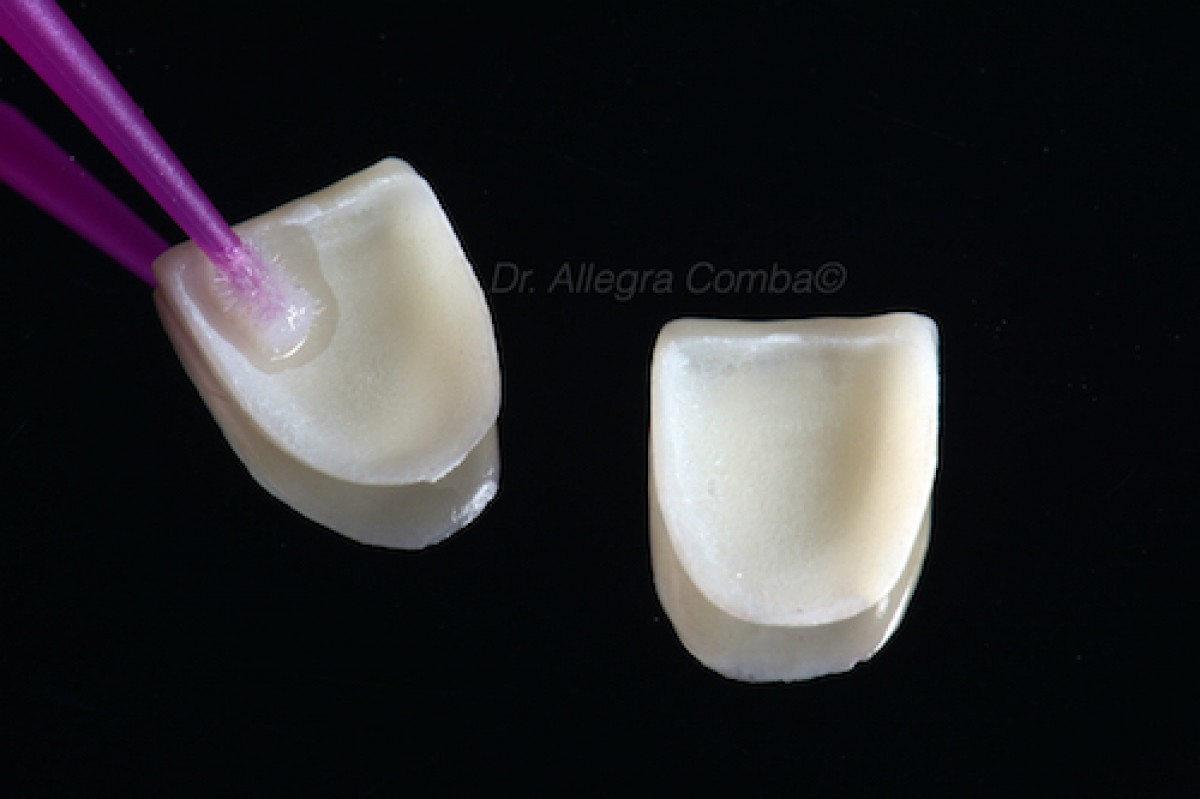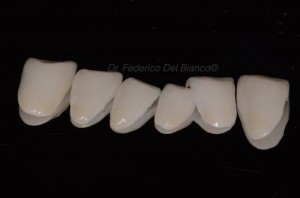
Photoactivation of the adhesive system for Ceramic Laminate Veneers during luting procedure: yes or no?
Co-authors: A. Comba, F. Florenzano
Lorenzo Breschi
The increasing demand for beautiful and harmonious smiles has greatly increased the use of ceramic laminates. These esthetic restorations, that are claimed to be minimally invasive in terms of tooth preparation, still need standardized protocols when it comes to cementation. It is well known that, luting procedures are fundamental for the success of the ceramic restorations: adhesive resin cement contributes to the final esthetic quality of the restoration and improves the mechanical properties of the veneers. The use of adhesive systems in combination with light-cure resin cements is the gold standard for luting ceramic laminates since they promote retention and resistance to fracture and improve color stability. Indeed, clinicians have numerous doubts about the best polymerization protocol for the luting procedures as no literature is answering all everyday clinical questions. The study conducted by Strazzi-Sahyon et al. from São Paulo State University investigated the need for photoactivation of the adhesive system inside ceramic laminates before the luting procedure and evaluated the color stability, nanohardness, and elastic modulus of the adhesive interface activated with singlewave and polywave light-curing units.
Material and methods
The authors fabricated a total of 44 lithium disilicate ceramic veneers (7.0 mm × 8.0 mm × 0.6 mm), bonded them to enamel and then divided them into four experimental groups (n = 11 each) according to the type of light-curing unit (Radii-Cal [singlewave] or Valo [polywave]) and adhesive system activation mode (with or without previous photoactivation). Two luting agents were used for the experiment: the Tetric N-Bond adhesive system and the Variolink Veneer resin cement. Strazzi-Sahyon et al. employed a visible ultraviolet spectrophotometer to evaluate the color stability before and after UVB artificial accelerated aging for 252, 504, and 756 hours (n = 8 samples from each group). Finally, a nanohardness tester under a load of 1,000 μN was used to evaluate the nanohardness and elastic modulus (n = 3 samples from each group).
Results
Considering the statistical analyses of the collected data, the authors revealed that when preliminary activation of the adhesive system is performed, light-curing units and aging periods have no significant influence on the color stability or mechanical properties of the resin cement (P > .05), except for the group activated with Radii-Cal after 756 hours, where the non-preliminary activation showed lower color alteration compared to the previous photoactivation (P = .0285). Without preliminary activation of the adhesive, the polywave unit Valo promoted higher nanohardness and elastic modulus values in the adhesive system (P < .05). No statistically significant difference between the light-curing units under the same experimental conditions or among various aging periods were found (P > .05). For the period of analysis of 756 hours, the non-preliminary adhesive activation presented lower color alteration than the preliminary photoactivation of the adhesive system when the Radii-Cal singlewave light-curing unit was used (P = .0285).
Conclusion
Based on the methodology used and results obtained by the authors, it can be concluded that, in general, singlewave and polywave light-curing units promoted no difference in color stability or the mechanical properties of the adhesive interface. The prior curing of an adhesive system inside ceramic laminate is not necessary for the final outcome.
For more information: Is It Necessary to Photoactivate the Adhesive System Inside Ceramic Laminate Veneers in a Luting Procedure?
 Related articles
Related articles
Restorative dentistry 12 January 2021
Co-authors: A. Comba, F. Del Bianco
Ceramic veneers are considered an excellent choice for anterior restorations, especially when high aesthetic demand is needed. The literature in the field reveals different annual failure rates for...
Restorative dentistry 23 February 2023
Universal materials and selective procedures in restorative dentistry – where are we now?
The current trend in the dental industry is to provide universal materials in the form of a one bottle system that can be used in a variety of clinical...
 Read more
Read more
Editorials 10 October 2025
With proud smiles and crisp white coats, ninety-three learners from the DDS Class of 2029 and the International Dentist Pathway Class of 2028 marked the start of their dental careers at the UCSF...
Periodontology 10 October 2025
Continuous professional development (CPD) in Periodontology refers to the overall framework of opportunities that facilitate a life-long learning practice, driven by the learner-practitioner and...
TheraBreath, the #1 alcohol-free mouthwash brand in the U.S.*, has introduced a new line of dentist-formulated, clinically tested toothpastes designed to support professional oral care...
News 10 October 2025
New officers and trustees were installed at the Minnesota Dental Association’s Leadership Conference on September 19 in Minneapolis.
News 10 October 2025
Smartee Denti-Technology today announced that Professor Gang Shen, its Chief Scientist and Executive President of TaiKang ByBo Dental, has once again been named to the World’s Top 2% Scientists...












